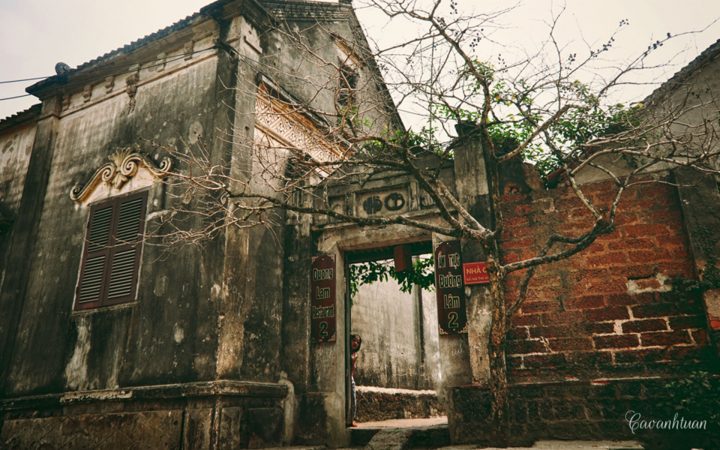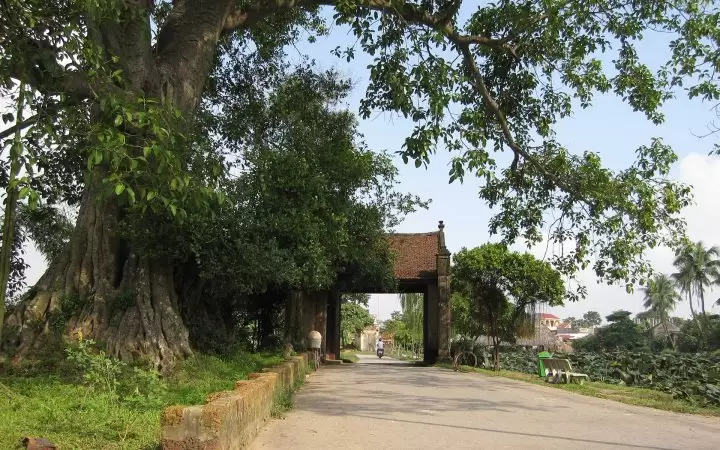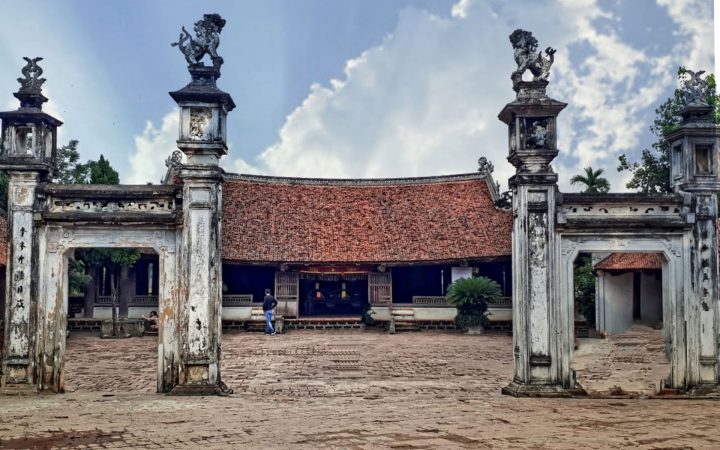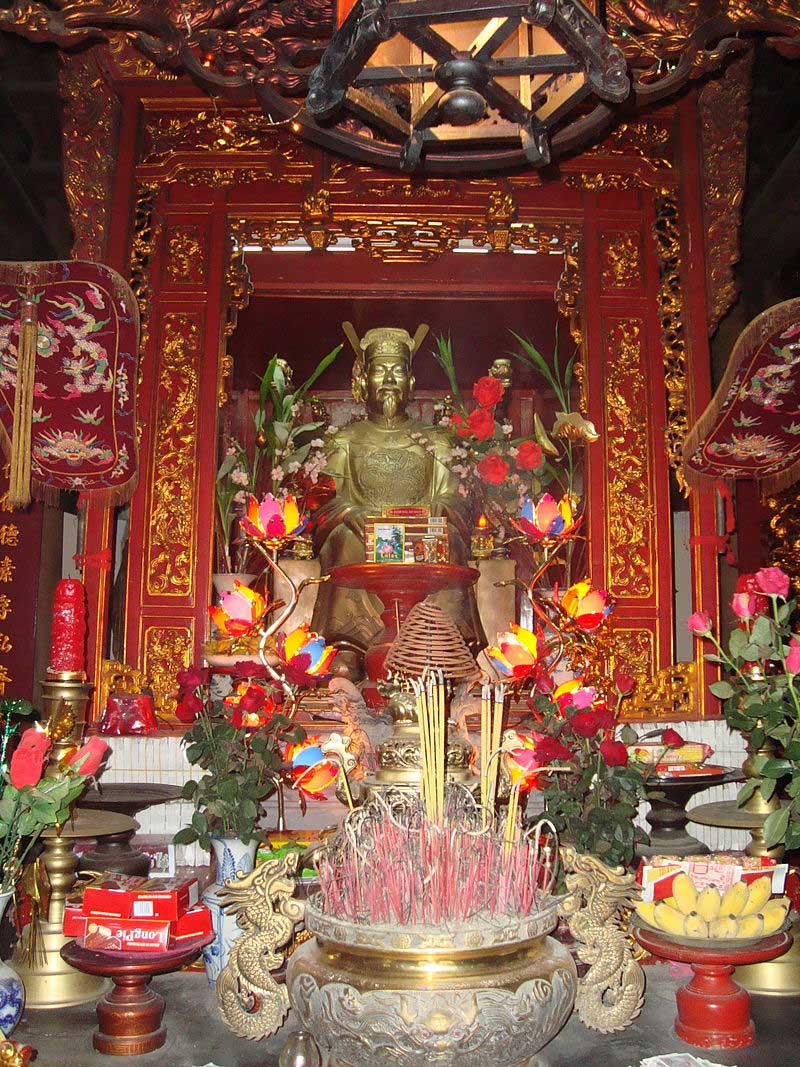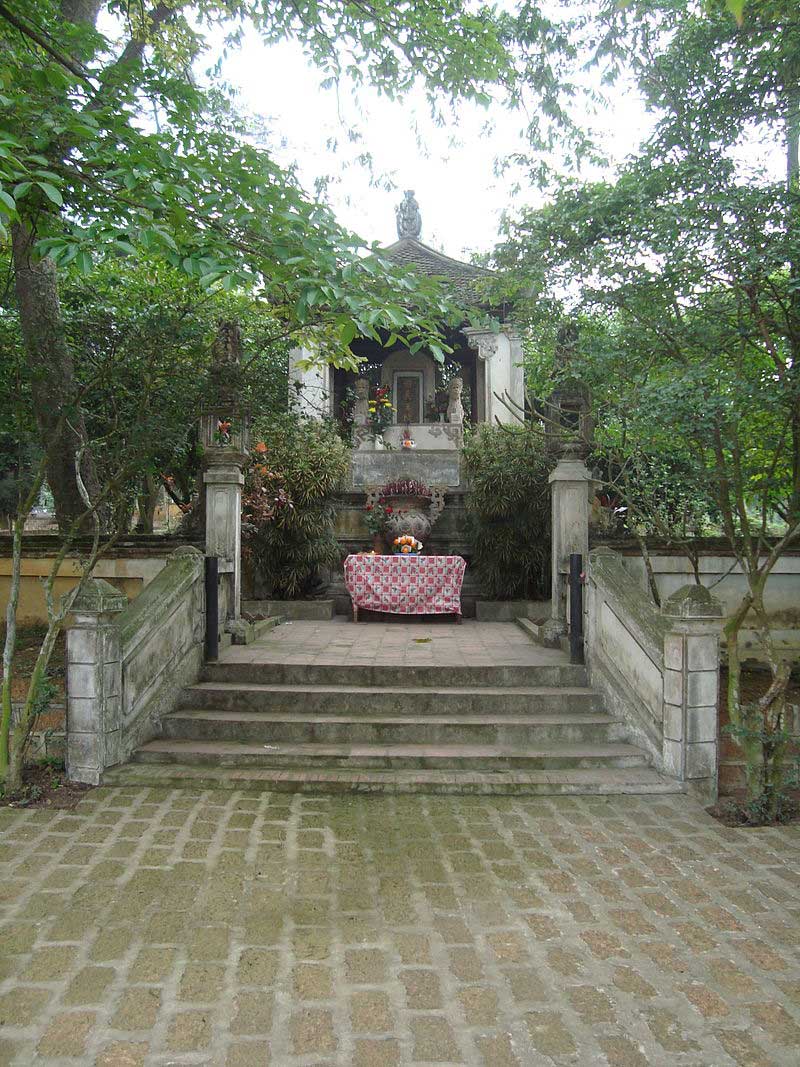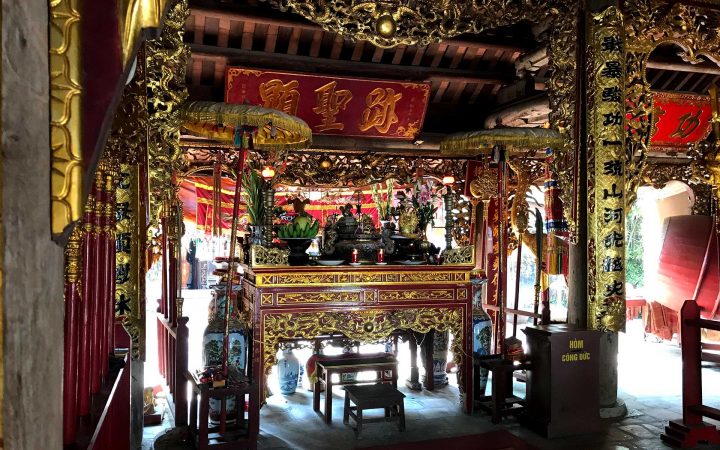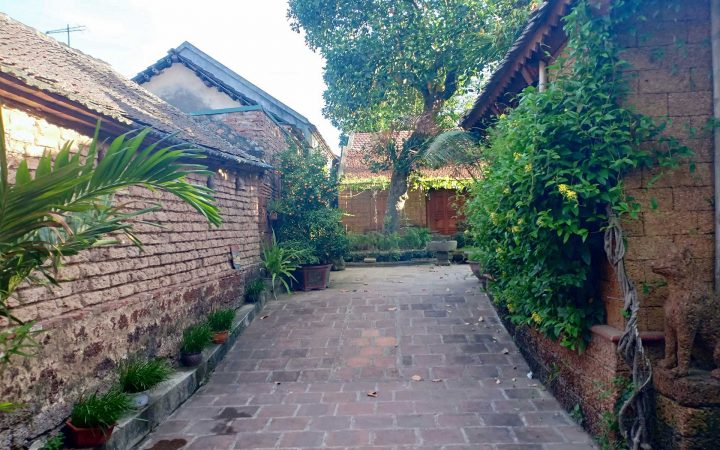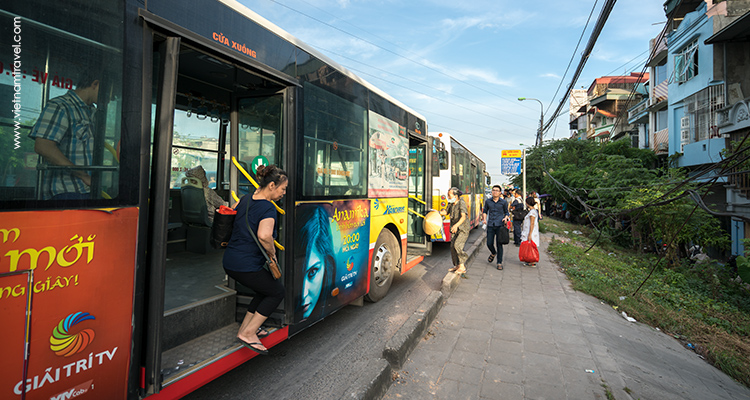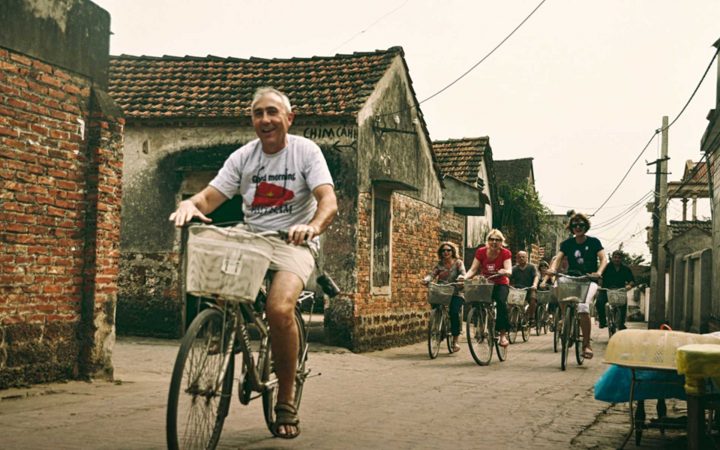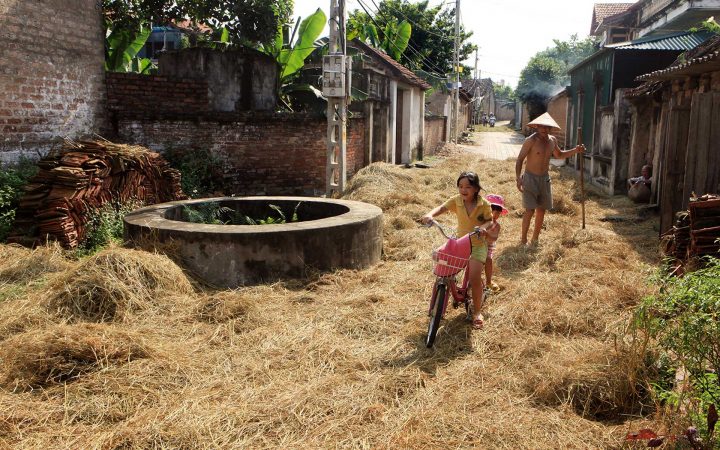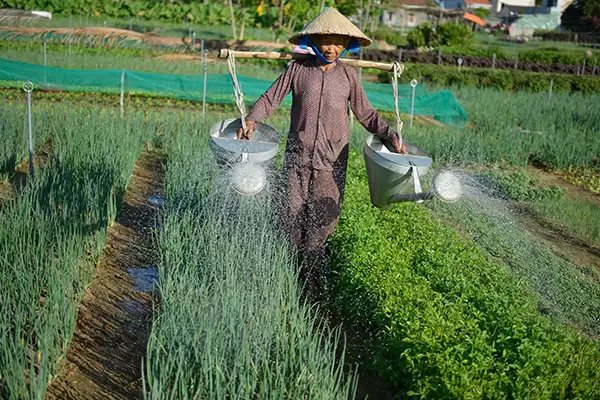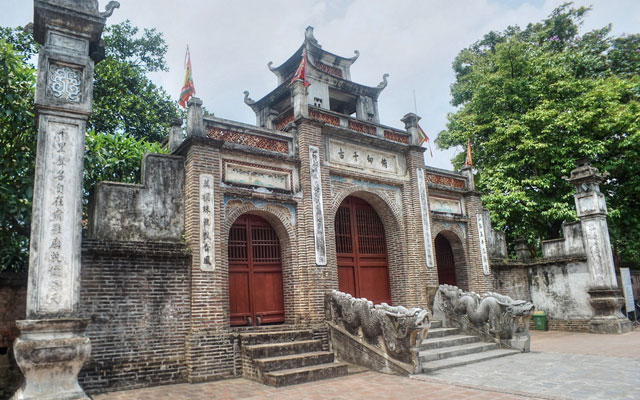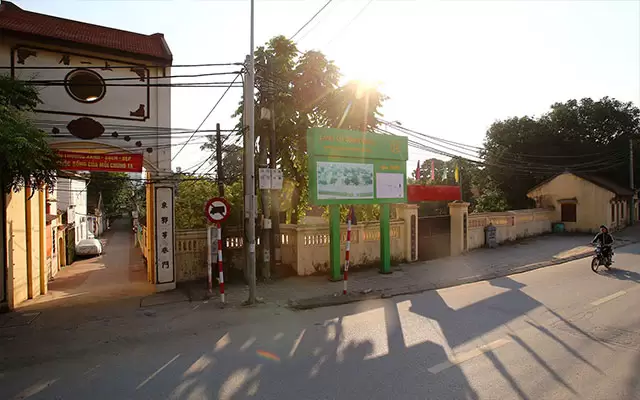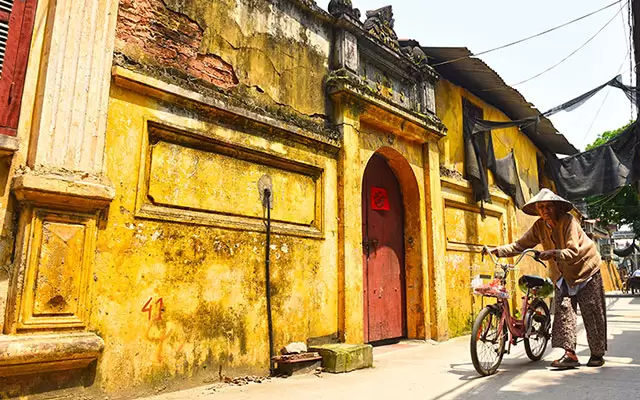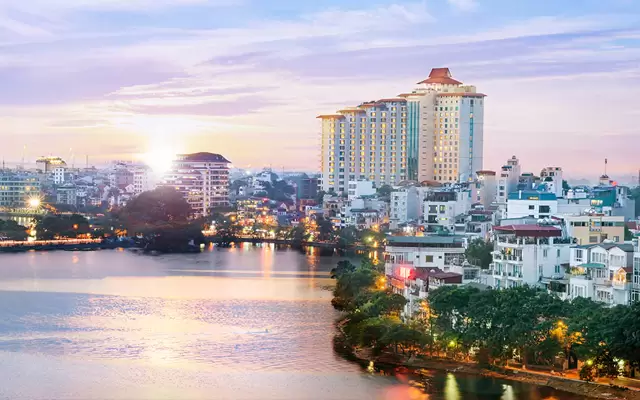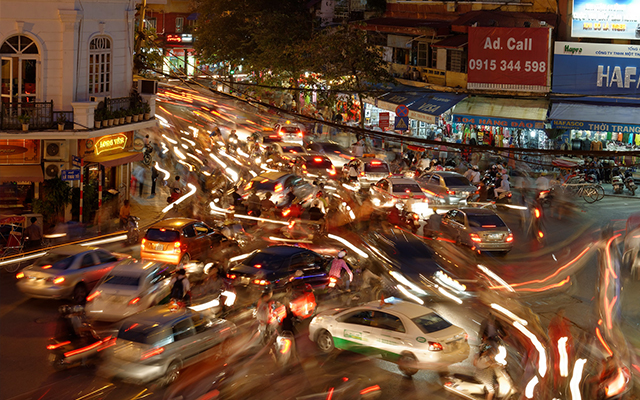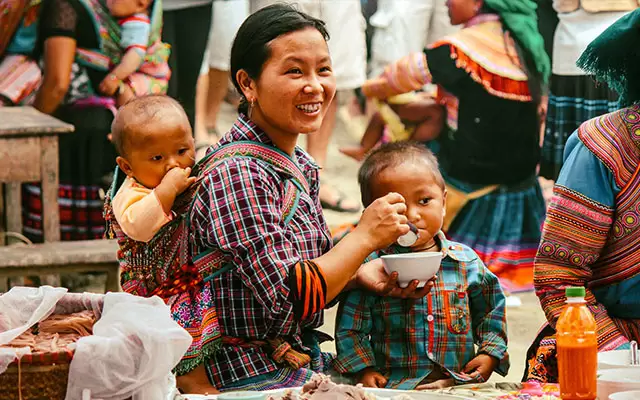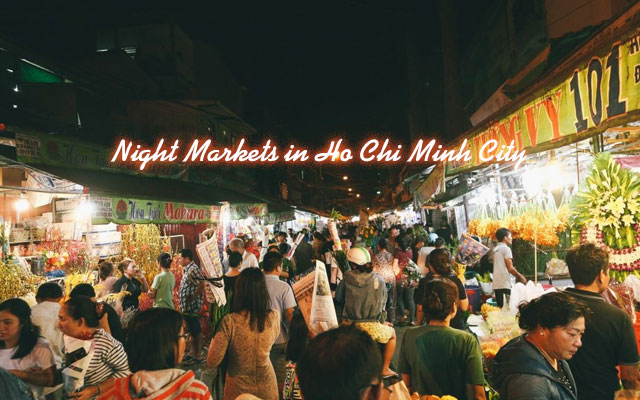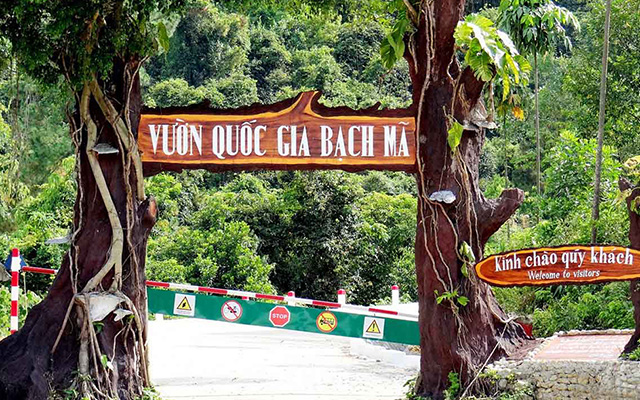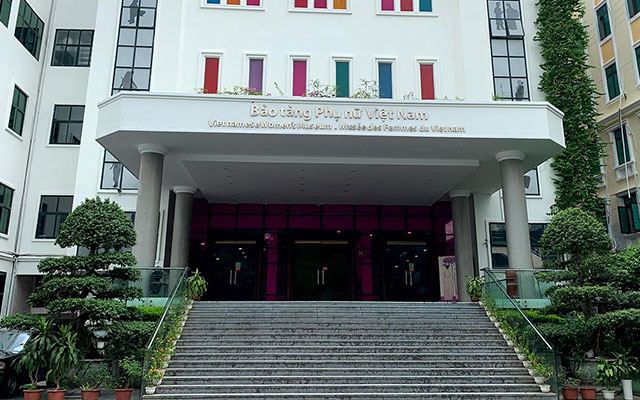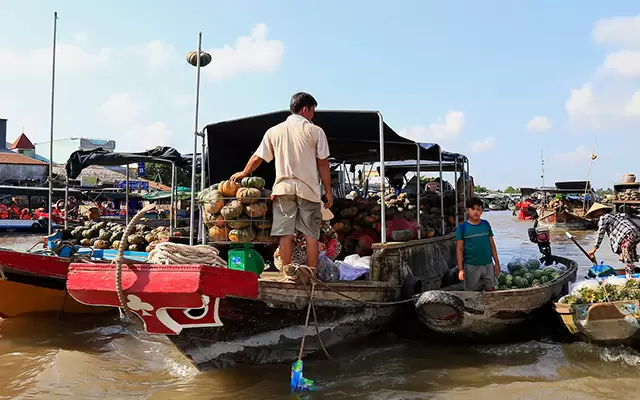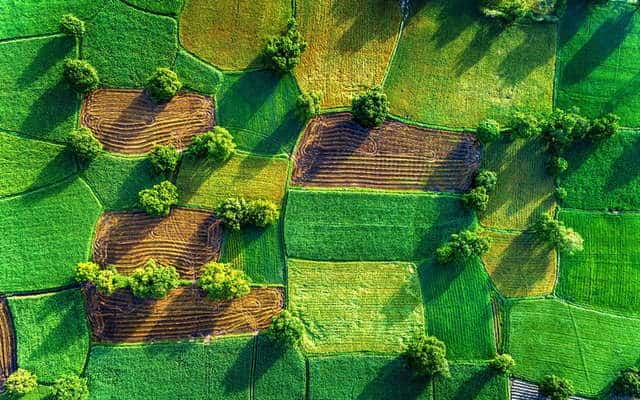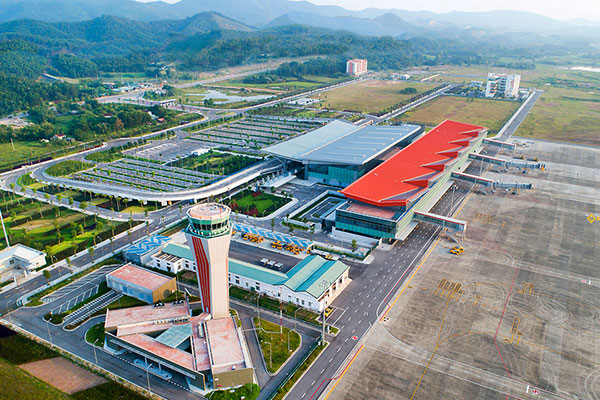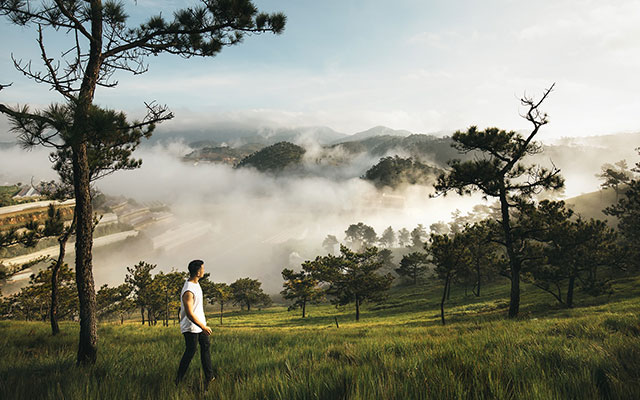Duong Lam Ancient Village
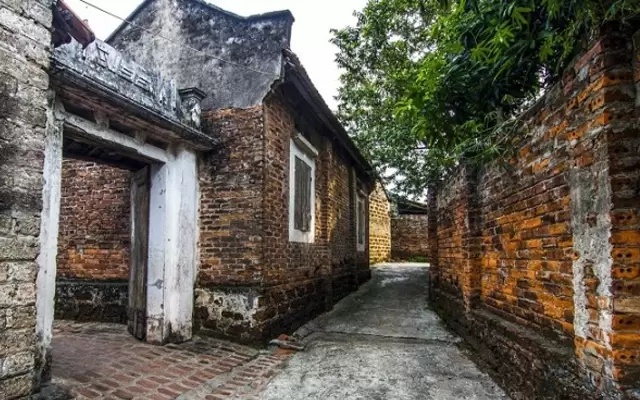
Duong Lam Ancient Village is located about 50 km northwest of downtown Hanoi. This village is a perfect choice for those who are looking for a peaceful countryside atmosphere. Coming to Duong Lam, you will find most of the features of a typical northern village: banyan trees, water wells, communal yards, pagodas & temples, winding village brick roads and small alleys, laterite walls, old wooden houses. Despite advanced modernization & urbanization, the village itself still preserves traditional values with full of nostalgia and tranquility.
Table of Contents
1. History of Duong Lam Ancient Village
Located in the heart of the Red River Delta, Duong Lam used to be the center of agriculture and industry in Northern Vietnam. The area was settled around 1.200 years ago and initially consisted of nine hamlets scattered across Duong Lam Commune.
In 2005, Duong Lam was the first ancient village in Vietnam which was declared as the National Cultural and Historical Relic, which ushered in preservation and restoration program. Conservation of five brick houses in Duong Lam helped the village get an award of merit from the UNESCO Asia-Pacific Awards for Cultural Heritage Conservation in 2014. Conservation helps to preserve the village’s heritage and culture, as well as bring more tourists to Duong Lam Village and create more income opportunities for local villagers.
In terms of the architectural scale, Duong Lam Ancient Village is only after Hoian Ancient Town and Hanoi Old Town. It still remains the art and architecture of an ancient village in the Red River Delta. Being known as the “living community”, there are many families living here from generations to generations.
2. Main attractions in Duong Lam Ancient Village
2.1. Mong Phu Village Gate
There were several entrances to Duong Lam Village, but there is only one ancient gate left to this day. In ancient Vietnamese architecture, the village gate is considered as the sign marking the inside and outside of the village space and is a ritual in the indispensable structure of a village.
Mong Phu village gate was built in 1553, during the reign of King Le Thanh Tong. Visitors may be impressed by its distinguished architecture rather than a traditional village gate. Mong Phu village gate looks like a house with two sloping roofs, with support pillars and roofs in the style of “upper house Xiamen” (above is the house, below is the gate).
Standing together with banyan trees, water wharf, lotus pond and rice paddy fields, Mong Phu village gate creates a typical setting of the idyllic village in Red River Delta.
2.2. Mong Phu Communal House
In villages in Red River Delta, communal house serves both as the administrative centre and the place of worship for the guardian spirit, whose sacred powers, sanctioned by a royal certificate, were believed to secure the village’s prosperity. In addition, it’s also the public gathering space for ceremonies and festivals in the village.
Built in 1553 during the reign of King Le Than Tong, Mong Phu communal house was used to worship Tan Vien Mountain Saint – one of the four immortals of the Vietnamese people. And it was expanded for an outer communal house and two colonial left houses on both sides in the reign of King Tu Duc in 1859. It was built on the center as well as the highest land of the Duong Lam village with about 1800m2 wide, which was considered as the land of the dragon shape by locals.
The communal house’s design simulated the Vietnamese – Muong architecture as stilted house with wooden floors on the ground. The large yard in front of the house was paved by Bat Trang bricks – the most famous pottery village in Red River Delta. The communal house is surrounded by a system of laterite fence – a very popular material used to build houses in this area.
2.3. Temples of King Phung Hung and King Ngo Quyen
Phung Hung (761-802) and Ngo Quyen (896-944) – two of Vietnam’s Kings, were born in Duong Lam, giving the village its prestige as “The Land of Two Kings”. Both men led resistance wars against northern invasion and were crowned kings after gaining national independence.
* Phung Hung Temple
In the year 791, Phung Hung gathered the people and rose up in arms against the An Nam Colonial Office. After his death, his people showed deep gratitude and praised him as “The Great Father and Chieftain.” The shrine dedicated to Phung Hung King is located on a low hill in the west of Cam Lam hamlet. The front yard of the shrine is flanked by two side-buildings. At the center is the front worship hall followed by the rear worship hall. The front worship hall is dedicated to the high-ranking mandarins of Phung Hung, and the rear worship hall is dedicated to Phung Hung King. The front worship hall was built in 1882. In the past, the center of the floor was paved with bricks. There were three altars: the altar at the center was used to worship the high-ranking mandarins, the left-hand side altar was dedicated to the deity of the village which organized the festival, and the right-hand side altar was dedicated to the deities of the other villages. The rear worship hall is also considered to have been built in the latter half of the 19th century. The structure and decoration of this building contain many old characteristics.
* Temple & Mausoleum of King Ngo Quyen
King Ngo Quyen, famous for his historic Bach Dang victory in 938, which closed one thousand years of Chinese feudal rule and opened a new era of independence and self-reliance for the Vietnamese people.
The complex of Ngo Quyen temple and tomb is about 500m away from King Phung Hung Temple. It was built on a high hill named Cam Hill. The temple was built at the top of the hill, about 100m away from the mausoleum. There is a large field in front of the mausoleum, laying between the two hillsides. According to the legend, the young Ngo Quyen often fed buffaloes, and practiced martial arts with his friends on this ground.
Ngo Quyen Temple was built in 1874 and had been restored many times. The most recent renovation was under the reign of King Tu Duc (1848 – 1883). The mausoleum of King Ngo Quyen was built in the 27th year of Tu Duc Reign (1874).
The temple includes: main gate, left curtain, right curtain, front chamber and back chamber. At present, the main chamber is used to display the victory of Ngo Quyen in Bach Dang River. The back chamber comprises of 3 compartments, the wooden frame is decorated with dragon, flower, and leaf, etc. The statue of Ngo Quyen lies in the middle.
2.6. Mia Pagoda
When visit Duong Lam, Mia Pagoda is a must see place that tourists should not miss. It dates back at least to the 15th century and is considered to be one of the 10 oldest temples in Vietnam. The original pagoda (known as Sung Nghiem Tu) was abandoned on the 17th century and was restored in 1632 by the wife of the northern Vietnamese leader Tring Trang. Locals called her as Lady Queen Mia and the pagoda was also named after Mia Pagoda.
Mia Pagoda houses a huge collection of 287 Buddhist statues, including 6 bronze statues, 107 wooden statues and 174 earthenware ones. Its architecture style followed the concept of “Internal attack with outside support” (Nội Công Ngoại Quốc in Vietnamese) – a traditional architecture style for the pagodas and temples in Vietnam.
2.7. Traditional Residential Houses
With the history of about 1.200 years, Duong Lam Village is home of 956 traditional old houses dating back up to 400 years. These old houses were mainly made from traditional materials, such as: oval wood, bamboo, terracotta bricks, tiles. Laterite can be found on house walls, gates, wells, temple walls, and so forth.
The wooden house mainly consists of 5 or 7 compartments with 2 wings. The doors and columns inside the house were sophisticatedly carved with details of flowers, leaves, and clouds.
The wooden doors is very firm system. Each compartment has 4 leaves of the door with upper and lower joints. Thresholds were made of firm wood above 40-50cm from the ground and 10cm from the floor. This distance helps to ventilate well, avoid humidity for the thresholds. The whole system of the thresholds is the tie system linking all spans together.
There is a large courtyard in front of each house, which is often used to restore huge clay pots of home-made rice wine or soybean sauce.
Here are some of the most famous houses you should visit:
– Mr. Nguyen Van Hung’s Old House – the oldest one in this area which has the gate built by a mixture of soil, rock, rice husk and musk
– Mr. Ha Nguyen Huyen’s Old House – attracts tourists with the green trees and the brick-paved yard which is the place to make famous soybean sauce.
– Mrs. Duong Thi Lan’s Old House – built 238 years ago. With the unique architecture, the house is always cool in summer and warm in winter.
3. How to Get There
3.1. Bus
Bus is the cheapest means of transportation. But the drawback is that the waiting time for a bus is quite long. Thus, you need to be very patient. There are 3 bus routes from Hanoi to the ancient village of Duong Lam:
+ Bus No. 71 from My Dinh bus station to Son Tay bus station.
+ Bus No. 73 from My Dinh bus station to Thay Pagoda.
+ Bus No. 89 from Yen Nghia bus station to Son Tay bus station.
From Son Tay bus station, you can take a motorbike taxi or taxi to the ancient village of Duong Lam.
3.2. Motorbike
This means of transportation is suitable for adventurous persons loving to explore the roads in Vietnam. There are 2 routes to ride motorbike from Hanoi to Duong Lam Village for your reference:
+ Go to Thang Long Boulevard, turn right at Hoa Lac T-junction. Follow Route 21 through Son Loc to the intersection with Route 32 and you will see a signpost leading to Duong Lam.
+ Follow route 32 to Son Tay town. At the intersection with road 21, there will be a turn to Duong Lam village on the left side.
3.3. Private car/van
If you want to save time and get deeper insight into the village, the best option is to book a day trip with private car/van and escorted tour guide from Hanoi with Vietnam Travel. As the village is a maze of similar-looking alleyways and small paths, and almost no local can speak English, and there is very little information available in English.
4. Tips on Visiting Duong Lam Ancient Village
4.1. When to visit.
Tourists can visit Duong Lam Ancient Village at any time of the year. However, the festive season and the ripe rice season are the most suitable time for a more memorable trip.
* Festival Season
Festival season in Duong Lam Village takes place annually in January of the lunar calendar. The ceremony is held at the communal house with processions, offering pigs, raising chickens… Then the villagers will participate in folk games such as chess, chess, fighting. chickens, blindfolded to catch ducks. All create a joyful and bustling festive atmosphere.
* Rice Harvesting Season
May and June are the time when the rice fields are at full maturity. The roads in Duong Lam Village are full of dry straw, which creates a warm, peaceful and rare village scenery.
4.2. Photography and etiquette
– Duong Lam is a tourist attraction, but local villagers are still living there. Therefore, outsiders must be polite and respectful. You should ask permissions before taking photos or portraits. And avoid trespassing on private properties.
– For the visit in temples and pagodas, visitors must be properly dressed before being allowed entry to the temple. You must wear long pants and shirts with sleeves – no tank tops (short & long sleeves are fine).
– Though English is rarely spoken in the village, local residents are very friendly and warmhearted. They are ready to invite tourists to visit their houses, sip a cup of tea. But for most it is a way to support themselves and pay for the upkeep of their home, so a small tip or donation is recommended.
 Italiano
Italiano
 English
English

